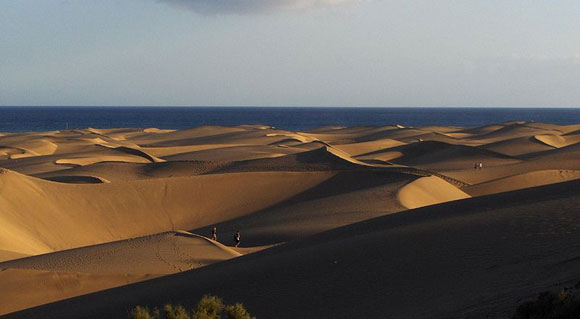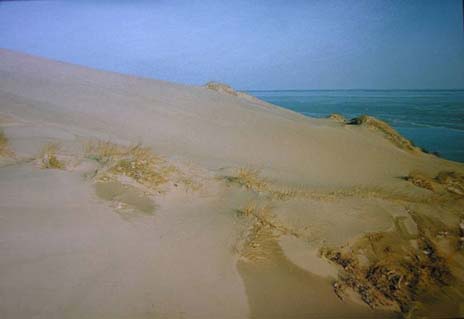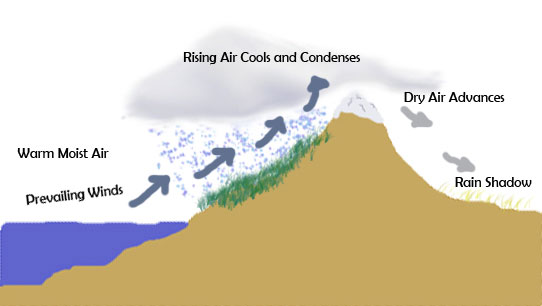
Eolian Systems
Wind is second only to running water as a powerful agent of erosion. It both erodes material away and deposits it somewhere else. Thus, wind has great potential to shape the landscape. In Greek mythology, Eolius was the ruler of the winds. Likewise, we call environments shaped by wind, eolian systems. Because they are driven by wind, eolian systems derive all their energy from the Sun—since incoming solar radiation affects all of Earth’s winds.
Click through the tabs to learn about three places where eolian landscapes are found.
|

Eolian landscapes are most common in the subtropical desert areas of the world; those parts of the world where vegetation is sparse and there is an abundant supply of loose, unconsolidated sediment. In these subtropical regions, dry descending air makes for dry deserts on the ground. The low moisture level means that the soil is easily blown away by wind.
|
| « Previous |
Next » |
|

While eolian landscapes are most common in the subtropical deserts, they are also found in coastal environments, where winds are high and there is an abundant supply of loose sand on the ground.
|
| « Previous |
Next » |
|

A third place where eolian landscapes are found is the rain shadow deserts of the world. These are located behind mountain ranges. The mountains intercept warm moist air, so that the backside of the mountain is dominated by dry and cool air that descends down the mountain and makes the other side a desert.
|
| « Previous |
Next » |
 Eolian landforms are common in deserts, where vegetation is sparse. What effect does vegetation have on the wind’s ability to shape the landscape? Vegetation holds the soil down, acting like an anchor that keeps it from blowing away in the wind. If there is no vegetation at all, such as in extreme desert environments, the soil easily blows away.
 Eolian landforms are also common in dry areas with very little humidity. How does the air’s moisture level affect wind erosion? Humid climates discourage wind erosion. High humidity means more rainfall, more vegetation, and more moist soil. Moist, vegetated soil is much harder for wind to erode away than dry, bare soil. Water holds soil particles together and gives them greater cohesion.
 Weathering is a necessary first step before eolian landscapes can form. Why?
Before wind can erode away soil and sand particles, weathering has to first create those particles. Small unconsolidated particles are produced by weathering. They are then further eroded away by the wind.
|
| « Previous |
Next » |
© KC Distance Learning. All rights reserved.



